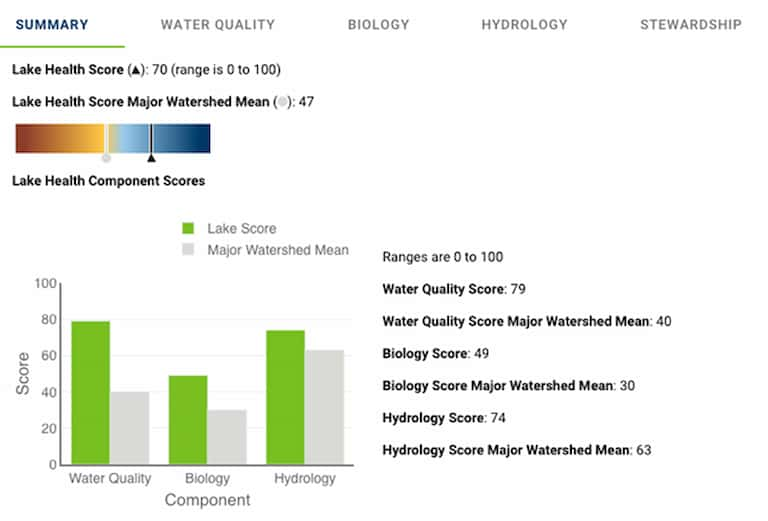As a new part of the MN DNR’s Watershed Health Assessment Framework, the lakes section is now available online. It provides easy access to water quality and health information for thousands of Minnesota lakes.
In the new site, you can find detailed information about a lake’s water quality, biology, hydrology, and stewardship. You can drill down to an individual lake by major watershed, county, catchment, and more.

As a new part of the MN DNR’s Watershed Health Assessment Framework, the lakes section is now available online. It provides easy access to water quality and health information for thousands of Minnesota lakes.
In the new site, you can find detailed information about a lake’s water quality, biology, hydrology, and stewardship. You can drill down to an individual lake by major watershed, county, catchment, and more.
Main Article
As reported January 23, 2023 in a news release from the MN DNR:
The Minnesota Department of Natural Resources has created a new online tool, called the Watershed Health Assessment Framework for Lakes (WHAF for Lakes) providing easy access to water quality and health information for thousands of Minnesota lakes.
WHAF for Lakes is part of the DNR’s Watershed Health Assessment Framework and is funded by the Clean Water, Land and Legacy Amendment.
Ecological and Water Resources Division Director Katie Smith said. “WHAF for Lakes will benefit anyone who wants to know more about a particular lake’s water quality and the health of the aquatic habitat and community in that lake. It will also help guide decisions about lake protection and restoration.”
Users can compare a lake’s health measures to other nearby lakes. Along with graphics showing lakes’ relative water quality, biology, and hydrology, WHAF for Lakes includes information about basic lake characteristics and lake stewardship. Quick access to this information will help Minnesotans, local government, and water resource agencies work together on comprehensive watershed management efforts.
A lake’s watershed includes all land and surface water upstream of a lake outlet that contribute water to that lake. Land uses within a watershed influence lake health. Alterations of the land, the shoreline, and nearshore vegetation affect the quality of the water and the health of the aquatic community in a particular lake.
“A healthy lake is one that is nearest to its natural state — free from pollution and with a natural shoreline that protects the bank and filters runoff — which allows it to withstand changing conditions and seasonal fluctuations,” Smith said. “Healthy lakes depend on people who value these resources and invest in the protection and restoration of the water, watershed, and biology.”
WHAF for Lakes can be accessed directly, from the DNR’s Watershed Health Assessment Framework site, or by using the DNR’s LakeFinder page.

